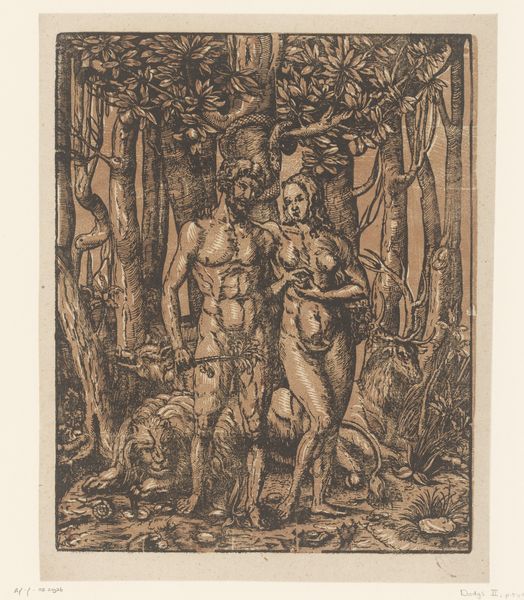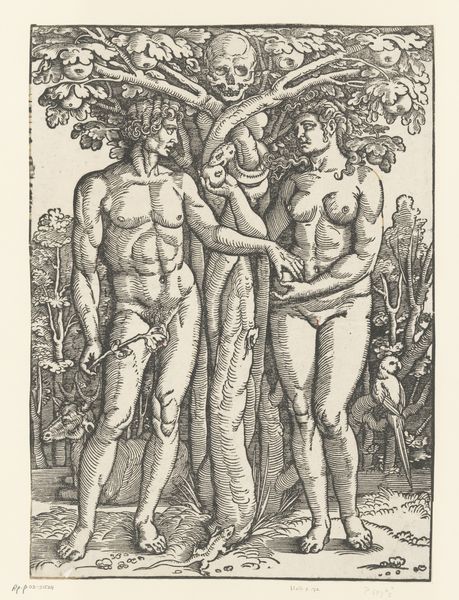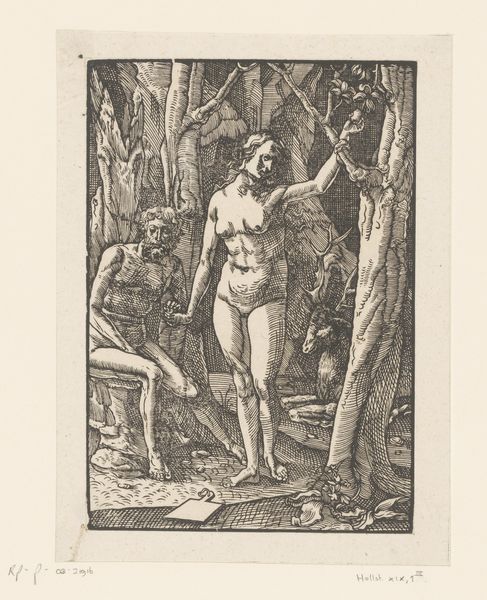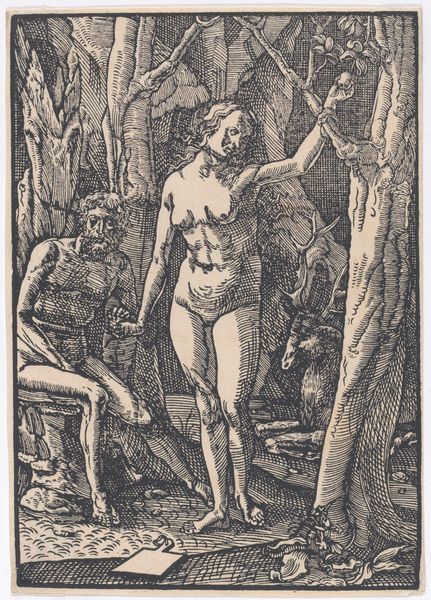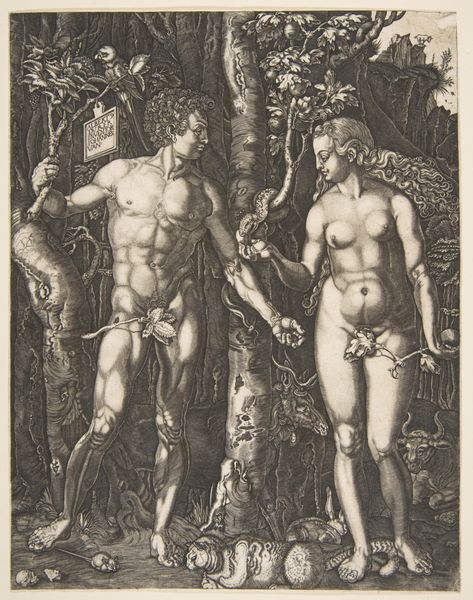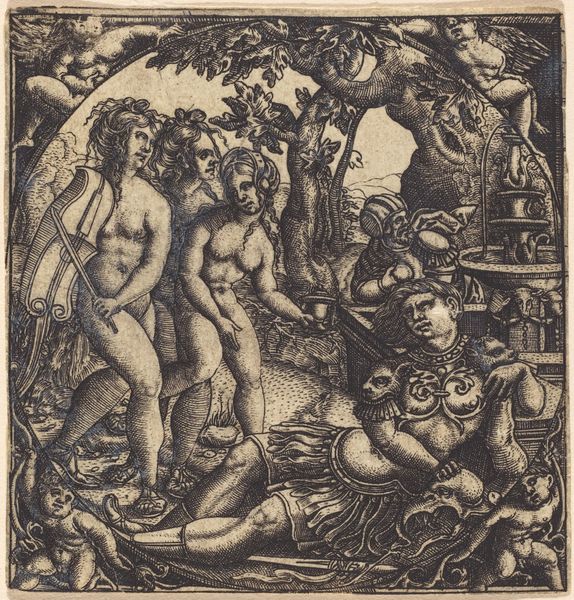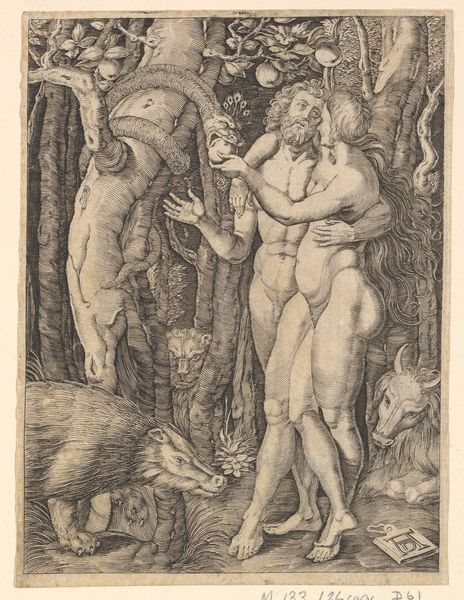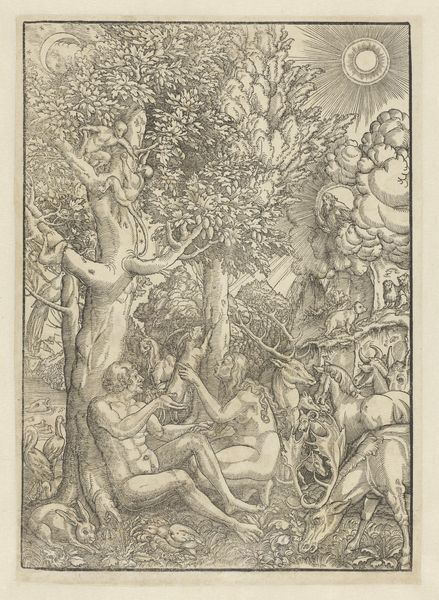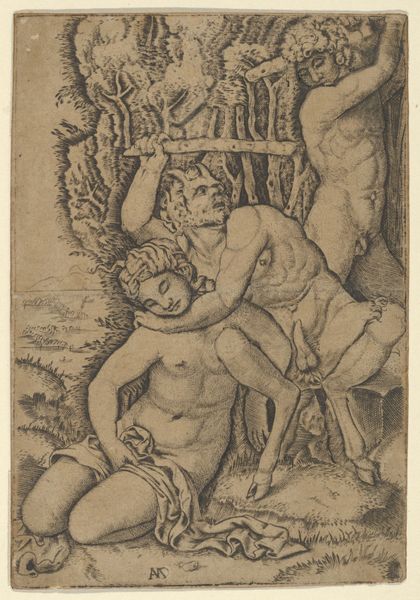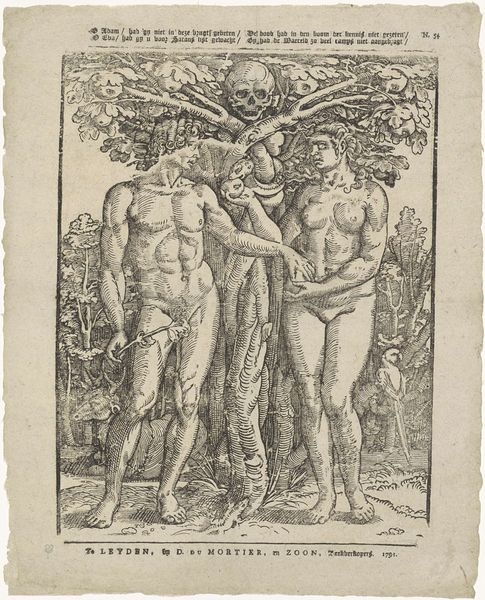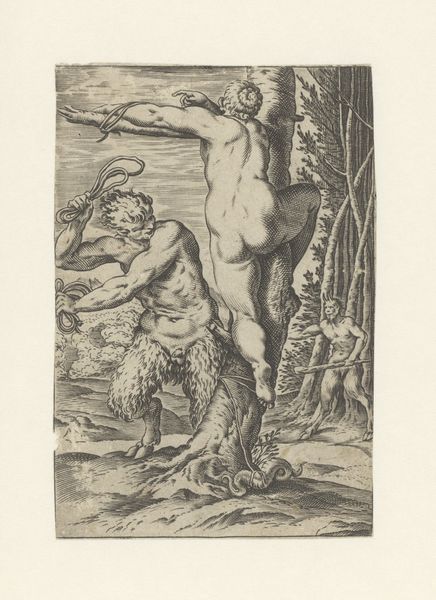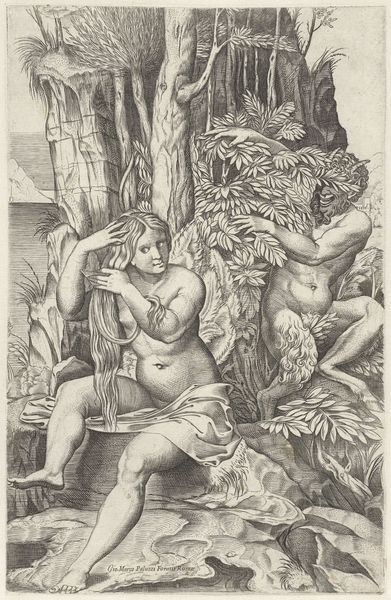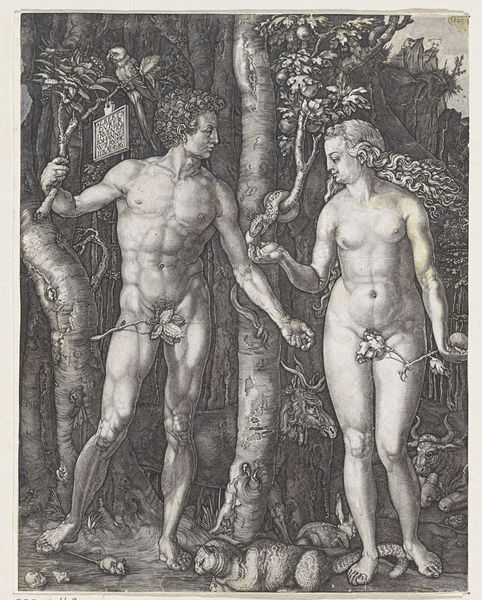
print, engraving
# print
#
figuration
#
line
#
history-painting
#
northern-renaissance
#
nude
#
engraving
#
realism
Dimensions: height 224 mm, width 149 mm
Copyright: Rijks Museum: Open Domain
Hans Springinklee made this engraving of the Fall of Man in the early 16th century. The well-muscled Adam and Eve stand in a dense forest, a snake coiled around a tree offering Eve the apple, referencing a well-known story of temptation and expulsion. Made in Germany, this print reflects the religious and cultural anxieties of the Reformation era. Artists like Springinklee were working in a society grappling with questions of faith, morality, and authority, as people began questioning the church. The image operates within established visual codes: the idealized nudes draw on classical traditions, while the dense forest evokes a sense of untamed nature and moral danger. Yet, by choosing to depict the moment of temptation, Springinklee engages with contemporary debates about free will, sin, and redemption. To fully appreciate such images, we need to dig into theological texts, social histories, and the prints themselves, always mindful that meaning is shaped by context.
Comments
No comments
Be the first to comment and join the conversation on the ultimate creative platform.
